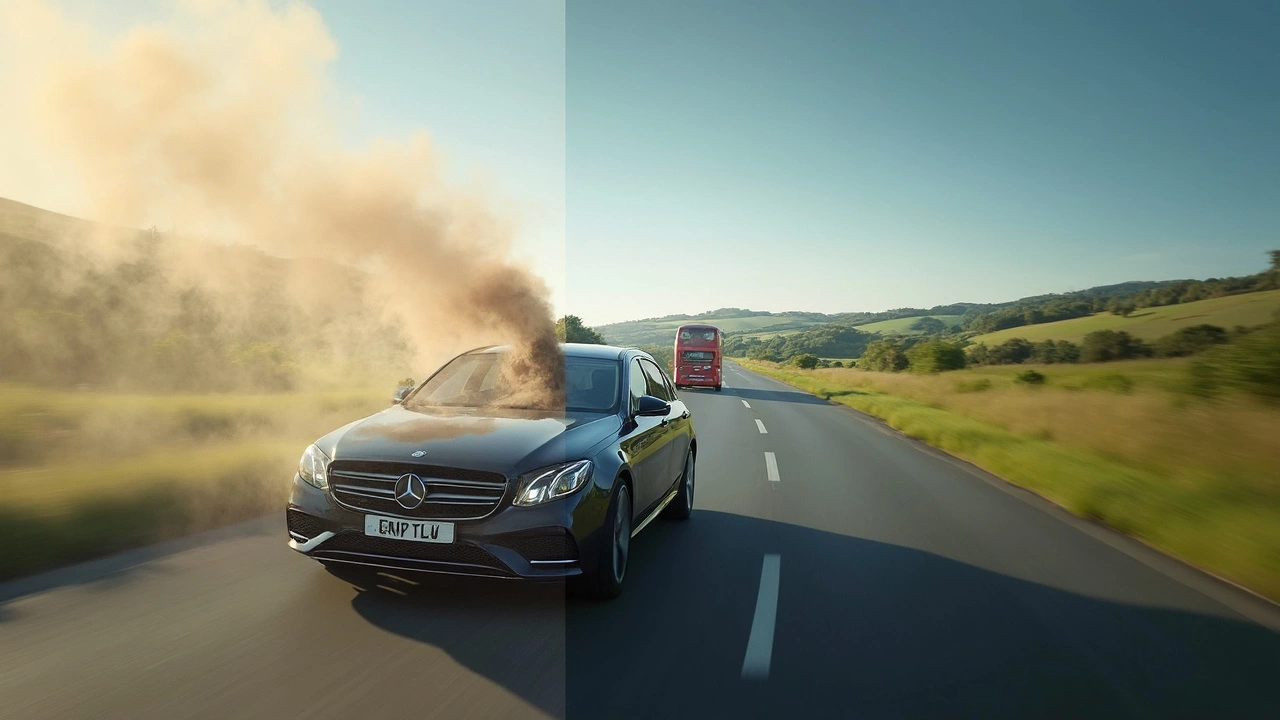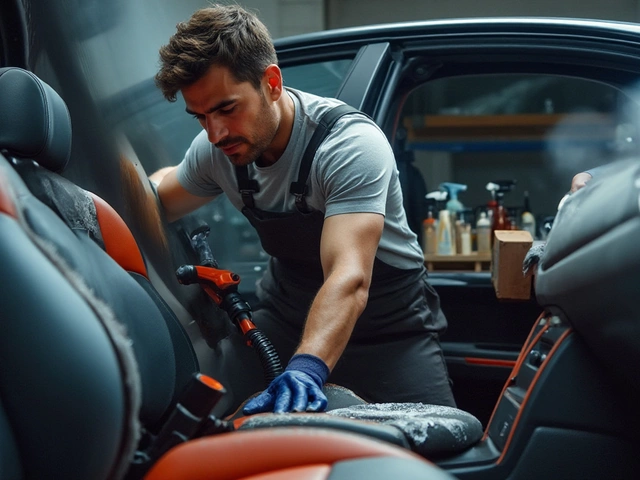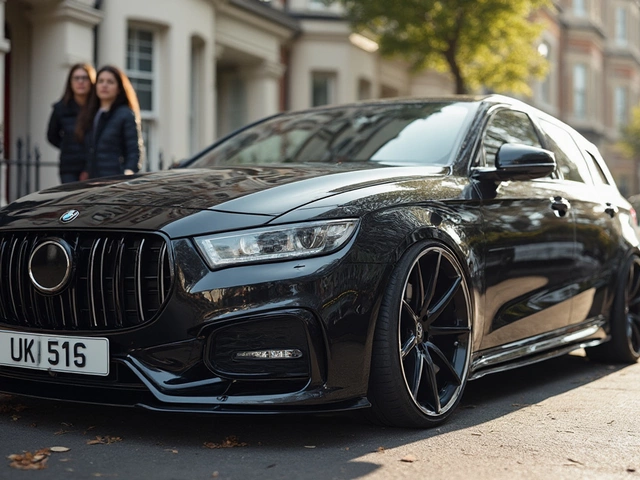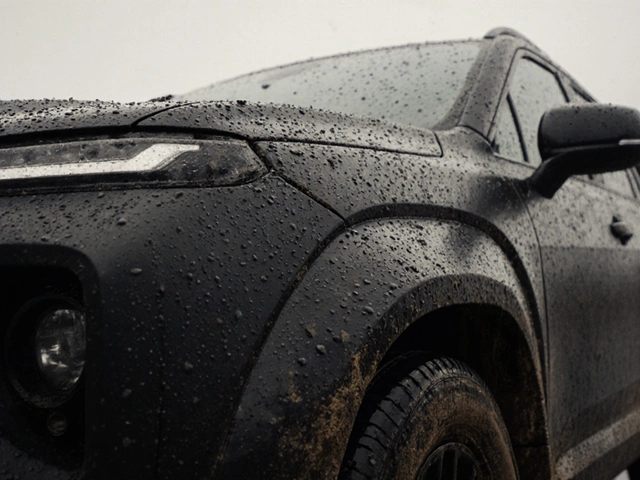Thinking about swapping your stock air filter for a K&N? You're not alone. Loads of drivers want an easy power boost or just a filter that lasts longer. But do these red-cotton, reusable filters actually deliver what they promise, or are they just another thing you don't need?
Let’s get real: Dropping in a high-flow air filter like K&N sounds like a smart move, but chemistry and engineering matter way more than advertising. Some folks claim to feel a difference, while others say it’s all in your head—or maybe just your wallet. If you've ever wondered whether these filters really improve throttle response or fuel efficiency, you’ll want the facts, not hype.
I’ll break down exactly how K&N filters work, the kind of cars that benefit most, and where you could end up disappointed. Plus, there are a few things the box doesn’t tell you, including what happens to your engine warranty, what cleaning one actually takes, and whether the cost is really justified over the years. I’ll share solid maintenance tips and the honest pros and cons from folks who’ve tried them in all sorts of rides.
- What Sets K&N Filters Apart?
- Performance Gains: Fact or Fiction?
- Maintenance and Longevity: The Real Deal
- Cost Breakdown Over Time
- Installation Tips and User Experiences
- Who Should Skip (or Grab) a K&N?
What Sets K&N Filters Apart?
So, what’s different about K&N filters compared to the basic paper air filters most cars ship with? The big thing is the material. Instead of paper, K&N uses a few layers of oiled cotton gauze sandwiched between wire mesh. This setup lets way more air flow through, especially when you push the throttle. More air means your engine can breathe easier, which, in theory, helps it burn fuel more efficiently.
Another big deal: these filters are reusable. You don’t toss them every 15,000 miles, like those boring disposable ones. Instead, K&N claims you can clean and re-oil the same filter for up to a million miles. That’s not an exaggeration—they literally advertise a 10-year/million mile limited warranty on most models. It’s kind of wild to think you might never need to buy another reusable air filter for your car, truck, or bike.
Performance is the main focus, though. Unlike standard filters that can choke airflow to keep out dust and dirt, K&N says their filters boost airflow by up to 50% compared to OEM paper filters. While dyno tests often show a 1-4 horsepower gain for street cars, the benefits get bigger for trucks and high-revving engines. Here’s a quick comparison:
| Feature | K&N Performance Filter | Standard Paper Filter |
|---|---|---|
| Material | Oiled Cotton Gauze | Pleated Paper |
| Reuseable? | Yes | No |
| Replacement Interval | Clean every 50,000 miles (normal driving) | Replace every 12,000–15,000 miles |
| Warranty | 10 years / 1 million miles | None (usually) |
| Airflow | High | Moderate |
Some folks worry about letting in more dirt with all that extra air. K&N addresses this with a special oil that’s sticky enough to catch dirt and debris, but still lets air pass. Plus, the wire mesh reinforces the filter, so you won’t crush it during rough installs. The brand’s been around since the 1960s and is still trusted by drag racers, off-roaders, and anyone trying to squeeze out extra performance. If you’re looking at performance air filters, K&N pretty much set the standard.
Performance Gains: Fact or Fiction?
This is the million-dollar question: do K&N filters actually boost your car’s performance or is it mostly marketing? Let’s slice through the noise. Performance air filters like K&N promise more horsepower and sharper throttle response. The truth is, the real-world gains usually depend a lot on your vehicle and how you drive.
On a bone-stock daily driver (think most regular sedans or crossovers), don’t expect a miracle. Independent dyno tests often show a horsepower bump somewhere between 1 to 4 HP. That’s barely noticeable for day-to-day driving. The real benefit comes when your engine actually needs more air, like in tuned or turbocharged setups, or cars made for the track.
| Vehicle Type | Average HP Gain |
|---|---|
| Stock Sedan | 1-2 HP |
| Performance Car (Factory Intake) | 2-4 HP |
| Modified/Turbocharged | 3-8 HP |
One place you might notice an actual difference? The sound. Some folks swear by a slightly throatier engine note after the swap, especially when you push that gas pedal harder. It won’t turn your daily driver into a race car, but for some, that little growl is a nice bonus.
About fuel efficiency—don’t bank on huge savings. Despite what some ads suggest, improvements in mpg are usually too tiny to notice unless you’re running the filter in a high-demand setup. If you’re mostly cruising in stop-and-go traffic, the difference is nearly invisible.
Bottom line: if you want a cheap, noticeable performance leap for your stock ride, a K&N performance filter isn’t going to blow you away. But if your car has other upgrades breathing for more air, a high-flow reusable air filter can unlock that little extra you’re actually building for.
Maintenance and Longevity: The Real Deal
If you're switching to a K&N filter for the long haul, the main selling point is that these things are reusable. K&N claims you can go up to 50,000 miles before the first cleaning under normal driving—way more than your average paper filter, which usually needs swapping out every 12,000 to 15,000 miles. For regular street driving, most folks can get by with cleaning it once a year. If your car spends half its life on dirt roads though, you'll want to check it more often.
The cleaning process isn't hard, but it’s not quite just rinse-and-go. You need the official K&N Recharger Kit, which includes a bottle of cleaning spray and filter oil. Here’s the basic rundown:
- Take the filter out and tap off any large debris.
- Spray it down with the cleaner and let it soak for about 10 minutes.
- Rinse with low-pressure water, always flowing from the clean side out to avoid sucking dirt deeper in.
- Let it air dry—don't use a hair dryer or compressor, just patience.
- Once it’s bone dry, apply a thin coat of filter oil evenly. Don’t drench it. Too much oil can actually trigger check engine lights on cars with MAF sensors.
- Reinstall and you’re set for thousands more miles.
As for longevity, you might be surprised: K&N offers a Million Mile Limited Warranty. It’s not just marketing fluff—it really means if you keep up with cleaning, the filter shouldn’t wear out for the life of your vehicle. People have driven upwards of 200,000 miles on a single performance air filter, making the yearly cleanings a small hassle for some real long-term savings.
Some stats from independent testers show that after five years, a well-kept K&N filter can still out-flow a brand new paper filter. But here’s a tip: if you forget to clean it or don’t oil it properly, you could end up letting more dirt through or choking your engine with clogged fibers. So, maintenance is not optional—it’s part of the deal if you want lasting performance and protection.
| Filter Type | Replacement/Cleaning Interval (Miles) | Expected Lifespan |
|---|---|---|
| Standard Paper Filter | 12,000-15,000 (replace) | 30,000-45,000 |
| K&N Performance Filter | 50,000 (clean + re-oil) | 1,000,000 (with care) |
If you're the forgetful or hands-off type, these might not be for you. But if you’ll actually wash and oil them now and then, K&N filters are built for the long run and can genuinely save you money over time.

Cost Breakdown Over Time
At first glance, a K&N filter seems expensive next to your standard paper air filter. A regular filter usually costs $10-20, while a K&N can run $50-80 right off the shelf. But K&N brags about their filter being a "lifetime" product, meaning you don't toss it out every year or two.
Here's the kicker: you clean and re-oil a K&N performance filter instead of replacing it. Most drivers hit the recommended 50,000-mile mark between cleanings, unless you live where it's really dusty. Compare that to the 12,000 to 15,000 miles you get out of a paper filter before swapping in a new one.
Let's do some quick math. Say you hold on to your car for 150,000 miles:
- Paper Air Filters: Replace roughly every 15,000 miles = 10 filters. 10 x $15 (mid price) = $150 over your ownership.
- K&N Air Filter: Buy once at $70, add in a cleaning kit (~$12, lasts several cleans). You might clean it 3 times, so one kit is enough.
| Filter Type | Total Filter Cost | Cleaning Supplies | Total (150,000 miles) |
|---|---|---|---|
| Standard Paper | $150 | $0 | $150 |
| K&N (Reusable) | $70 | $12 | $82 |
That’s more than a $60 saving over the life of a typical car, and if you drive more, the gap only grows. Plus, if you’re popping new filters into multiple rides, savings add up even faster.
But remember: if you skip cleaning your reusable air filter, or re-oil it wrong, you could end up with a clogged filter or damage your mass airflow sensor, wiping out your savings. So there’s some sweat equity needed.
In the grand scheme of car maintenance, swapping to a reusable K&N filter isn’t going to make you rich. Still, out-of-pocket, it’s often cheaper over time and way less wasteful than always tossing a dirty filter in the trash.
Installation Tips and User Experiences
Putting in a K&N filter isn’t rocket science, especially if your car takes a drop-in replacement. Most folks can yank out the old paper filter and pop in the new one in under ten minutes. Seriously, all you usually need is a flathead screwdriver or even just your hands. But with cone or custom intake kits, you might need a socket set, and some patience—it can get tight under there.
Before you do anything, double-check the fitment. K&N’s site has a tool so you don’t end up ordering the wrong part number for your car or truck. There’s nothing more annoying than getting a piece that doesn’t fit snugly, and a loose filter can let unfiltered air into your engine. Also, make sure you install the rubber gasket right, or you’ll end up with a code on your dash or even a rough idle.
- Pop the hood and locate your airbox. If in doubt, your owner’s manual usually has a diagram.
- Undo the clips or screws holding the lid in place.
- Remove the old filter and take a peek inside for leaves or dirt—wipe it out so it doesn’t get sucked in later.
- Slide the new K&N filter right into the slot (rubber side facing out, cotton side in).
- Replace the airbox lid and secure it. Double-check for a good seal.
Some users report an oil residue from new K&N reusable filters. This is normal. Just keep it away from sensors like the MAF—too much oil can gunk things up and throw a sensor code. If you’re worried, run the engine for a minute, then check for any check engine lights or strange noises. If you see anything weird, check your installation. It shouldn’t be loud—if you hear whistling, the filter might not be seated right.
Here’s a quick look at what actual users have reported installing various performance air filters:
| Car Model | Install Time | Biggest Discovery |
|---|---|---|
| Honda Civic | 5 min | Drop-in, instant fit |
| Ford F-150 | 20 min | Cone required hose clamp and patience |
| Subaru WRX | 10 min | Needed to adjust box for tight seal |
| Toyota Camry | 7 min | No tools needed, but airbox had debris |
Most folks love that you only need to clean a K&N filter every 50,000 miles under normal driving. When it’s cleaning time, just use their kit—spray, rinse, let it dry, re-oil, and reinstall. Don’t skip the drying step, or you’ll risk rough running.
One tip from longtime users: When cleaning, use just enough oil to turn the filter red again. Don’t drench it. Caked oil can mess up your car’s sensors and cost you more down the road.
The verdict? Everyday wrench-turners and first-timers mostly agree: installation is quick and the learning curve is short. Just mind those fitment steps and you’ll be golden.
Who Should Skip (or Grab) a K&N?
So, is a K&N filter the right fit for you, or would you be better off with a regular paper filter? It comes down to your driving habits, the kind of car you own, and how you feel about popping the hood for maintenance.
If you drive a high-mileage daily, work truck, or a ride with a turbocharged or performance-oriented engine, you’ll probably actually see the most from a reusable performance air filter. These filters let in a bit more air, which can help engines that really need extra oxygen—think muscle cars, trucks towing heavy loads, or anything running at high RPMs often. Also, drivers who live in dusty or rural areas might save money in the long run with a reusable air filter since replacements add up fast.
Are there folks who should just skip it? Absolutely. Daily drivers with basic commuter cars, especially if you stick to paved city streets and don’t put crazy miles on each year, may not notice any major difference. Most new cars with factory-stock engine performance settings already have optimized airflow, and swapping filters won’t turn your Corolla into a street rocket. Some automakers are picky about aftermarket parts—Ford and BMW, for example, can be particular with their warranty coverage if engine issues ever pop up and you’re using a non-OEM filter. Always double-check your warranty fine print.
There are a few more trade-offs to think about:
- Maintenance: K&N filters need occasional cleaning and re-oiling. If you’re not the DIY type, this could become a pain. Messing up the oiling process can actually damage mass airflow sensors in some cars.
- Cost: Upfront, K&Ns are pricier than paper filters. But they can pay off if you keep your car for over 100,000 miles, since you’re not buying replacements every 12,000–15,000 miles.
- Engine Type: High-horsepower, naturally aspirated or turbocharged engines get more benefit from improved airflow than basic econoboxes. You’ll actually feel that tiny boost in throttle response or hear a nice engine growl.
- Allergies or sensitivities: If you’re sensitive to dust or have air quality concerns, remember K&N’s high airflow means slightly less filtration than paper—on average, they catch about 96% of microscopic dust compared to 98% for some OEM filters.
Here’s a quick side-by-side for the main decision factors:
| Best For | Maybe Skip |
|---|---|
| Performance vehicles | Stock commuters |
| High-mileage drivers | Short city trips |
| DIYers who like maintenance | No-hassle car owners |
| Rural/off-road drivers | Strict warranty concerns |
Bottom line? If you like working on your own ride, are chasing small power perks, and plan to keep your car for awhile, a K&N performance filter is worth considering. But if you just want something simple and set-and-forget, a classic paper filter will do you fine.






